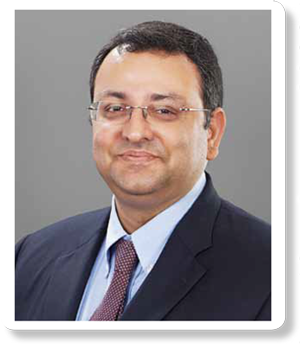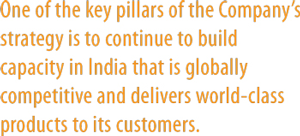

|
Dear Shareholders, The Financial Year 2013-14 saw mild trends of macroeconomic recovery in several major economies, including the US and Europe even though structural weaknesses continue to be a major threat in the medium term. The global steel industry has structural overcapacity in China and Europe, which need to be recalibrated to the underlying global demand to make the industry more competitive and sustainable in the long-term. Growth in China, the largest producer of steel globally, has tempered, as the country shifts gears to pursue a 'sustainable' model of economic development. Deviations in the growth trajectory of China will impact global steel demand-supply and pricing dynamics. In recent times, following the change in the political leadership in China, there has been a conscious focus by the leadership in China on improving the quality and sustainability of the country's economic growth model, which has had an impact on China's steel sector. It is believed that this structural shift could influence demand-supply dynamics in the regions, especially import susceptible geographies such as Europe and USA, and lead to moderation of raw material prices and pricing dynamics across regions. World crude steel production grew at 3.6% in 2013. Lower steel consumption growth in large emerging economies such as China and India were countered by growth in mature markets such as the USA. However, disinflationary pressures and financial fragility continue to be a concern in the Eurozone. In light of the above, global steel demand is forecast to grow by 3.1% in 2014. In Europe, despite volatile raw material prices and challenging market conditions, the business reported an increase in operating margins compared to the previous year. This is credited to the management's focus on cost management and a strategy for driving product differentiation. Over 30 new products were launched during the year in Europe, leading to a 75% increase in volume of new products sold. This is a record for the ongoing New Product Development programme. Our focus on driving market differentiation and cost competitiveness will continue in the future. On the domestic front, the Indian economy grew at a rate lower than the trend average of the last 10 years due to overhang of lower capital expenditure and investments, tight monetary policy and sluggish demand conditions in critical sectors such as automotive, infrastructure and construction. There are significant expectations of the new Government to pursue further economic reforms, investments in infrastructure and an inclusive growth agenda to revive the economy. Steel as a foundation industry will play a significant role in this journey and therefore it is very important for policy makers and the government to facilitate a robust supply side framework as an enabler for a vibrant steel industry in the country. Tata Steel is committed to engaging in a constructive manner with all stakeholders to evolve such a framework. One of the key pillars of the Company's strategy is to continue to build capacity in India that is globally competitive and delivers world-class products to its customers. In Jamshedpur, as part of the 2.9 million tonnes per annum expansion, the Company achieved almost a million tonnes of additional production and sales during the Financial Year 2013-14. In the midst of difficult market conditions, the successful ramp up during the year of all major facilities to their rated capacity enabled the Indian operations to improve operational efficiency and margins while sustaining a robust level of operating cash flow. As Tata Steel grows its volumes in India, it will strengthen its focus on customer centricity and branding across all product segments. |

|
The Company is also aggressively pursuing completion of the first phase of the 6 million tonnes per annum greenfield project in Kalinganagar, with stage-wise commissioning expected to start by end of Financial Year 2014-15. The Company is focussed not only on the execution of the plant facilities but also on addressing the socio-economic infrastructure needs of an industrial enterprise of this scale. The Company is committed to addressing the developmental needs and aspirations of the communities around the project, in the areas of health, education, livelihood and skill building. As the Company diversifies its operations into new locations in India and overseas, it will continue to build on the capabilities of its existing CSR programmes to improve the livelihood of the communities in which it operates. The Board and the leadership team are also committed to improving our safety practices and reducing the environmental impact of our operations. Sadly, the year gone by, saw the passing away of Russi Mody, a visionary leader, who helped Tata Steel transcend its corporate identity, achieving fame not just for its operational excellence, but also for its commitment to community programmes. In 2014, we celebrate the 175th birth anniversary of Jamsetji Nusserwanji Tata, a man whose passion and commitment to build a strong India was embedded in his vision for Tata Steel. We are committed to living his values and building on his legacy, as we strive to secure a strong future for our Company. Finally, I would like to thank all our shareholders and also our customers, suppliers, vendors, project contractors and lenders for their unstinted support to the Company during the year. I would also like to thank all the employees and unions, across the globe, for their tireless commitment to enhancing the performance and well-being of the Company.
Yours Sincerely, |


